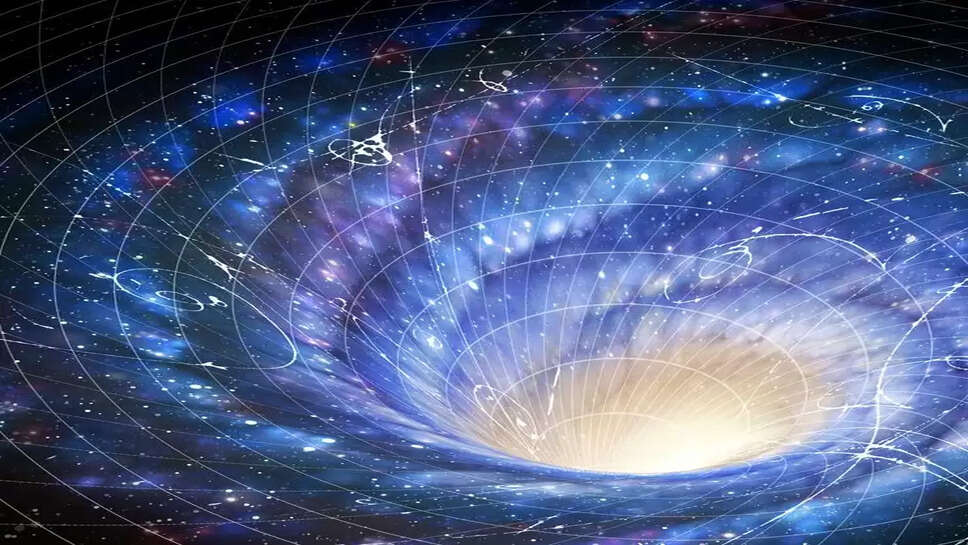The cosmic mirror: why antimatter could hold the secret to our existence

The universe is vast, beautiful, and mysterious. Among its greatest enigmas lies a baffling question: where is all the antimatter? According to physics, the universe should have been born with equal amounts of matter and antimatter. Yet, everything we see—galaxies, stars, planets, even ourselves—is made almost entirely of matter. The universe’s "missing half," antimatter, appears to be virtually absent. Why does this imbalance exist? What exactly is antimatter? And why is it crucial to unlocking the secrets of existence?
THE ANTISIDE OF MATTER: WHAT IS ANTIMATTER?
At its core, antimatter is the mirror image of matter. For every particle that exists in the universe—be it an electron, proton, or neutron—there is an equivalent antiparticle. These antiparticles have the same mass as their counterparts but opposite charge.
-
The electron has an antiparticle called the positron, which is positively charged.
-
The proton has an antiparticle known as the antiproton, with a negative charge.
-
Neutrons have antineutrons, which differ mainly in internal structure.
When a particle and its corresponding antiparticle meet, they annihilate in a flash of pure energy—a process that converts mass directly into photons. This is not science fiction; this is verified physics, and this energy release is incredibly powerful.
BORN TOGETHER, DESTINED TO DESTROY EACH OTHER?
Physicists believe that in the early moments after the Big Bang, the universe should have created equal amounts of matter and antimatter. Yet today, everything observable is matter. If the two were produced in perfect balance, they should have annihilated each other completely, leaving behind nothing but light.
But clearly, something tipped the scales.
That tiny excess of matter—just one part in a billion—somehow escaped annihilation and went on to form all the structures in the universe: galaxies, stars, planets, and life itself. The rest of the matter and antimatter destroyed each other in colossal bursts of energy.
But why did this imbalance occur? That remains one of the greatest unsolved mysteries in cosmology and particle physics.
THE ANTIMATTER HUNT: WHERE IS IT HIDING?
Scientists have searched the universe for antimatter galaxies, antimatter stars, or even antimatter meteorites. If large regions of antimatter existed, we would expect to see dramatic signals of annihilation where matter and antimatter meet—gamma rays emitted from the boundaries between such regions. But no such evidence has been found.
Experiments have sent balloons and satellites into space to detect antimatter particles, but so far, only traces have been discovered—likely formed in high-energy cosmic events rather than remnants of a large antimatter domain.
So where is the missing antimatter? Was it destroyed in the early universe? Or are there subtle, unknown laws of physics that favored matter just slightly? The question remains unanswered.
ANTIMATTER ON EARTH: FROM THEORY TO REALITY
While rare in the natural world, antimatter can be created in laboratories. High-energy collisions in particle accelerators like the Large Hadron Collider (LHC) routinely produce antiparticles. Antimatter is also used in medical applications—the most well-known example being PET scans (Positron Emission Tomography), which use positrons to image the body.
However, antimatter is extremely difficult and expensive to produce and store. A single gram of antimatter could theoretically produce as much energy as a nuclear bomb, but creating even a few nanograms requires vast amounts of energy and complex machinery. Once produced, antiparticles must be stored in electromagnetic traps to prevent contact with matter, which would cause instant annihilation.
Despite the difficulties, these experiments are essential. By studying how antimatter behaves—how it falls in gravity, how it interacts with forces—we may discover clues about why the universe favors matter.
THE MATTER-ANTIMATTER ASYMMETRY: A COSMIC MYSTERY
The scientific term for the imbalance between matter and antimatter is "baryon asymmetry." While the Standard Model of particle physics predicts certain asymmetries in how particles and antiparticles behave, these are far too small to account for the matter-dominated universe we live in.
Physicists are now exploring new theories that go beyond the Standard Model. Some involve unknown particles, others suggest violations of symmetries like CP violation (which means that the laws of physics are not the same for particles and antiparticles). These ideas are being tested in experiments across the world.
Discovering the source of baryon asymmetry could reveal a deeper layer of the universe's structure—perhaps even leading to a unified theory of physics.
ANTIMATTER AND THE FUTURE: ENERGY, TRAVEL, AND WAR?
The extreme energy potential of matter-antimatter annihilation makes it a tantalizing prospect for future space travel. If humanity ever hopes to reach other stars, antimatter-powered engines could, in theory, provide the most efficient form of propulsion known to physics. A spacecraft powered by antimatter could travel much faster than current chemical rockets, possibly reaching a fraction of light speed.
But antimatter's potential also brings darker possibilities. In theory, it could be weaponized to create unimaginably powerful explosives—far beyond nuclear devices. Fortunately, the current cost and complexity of producing antimatter make such fears remote.
Still, as our technology advances, the ability to harness or misuse antimatter may one day become real. This adds urgency to our need for ethical frameworks and international cooperation in science.
WHY ANTIMATTER MATTERS
Antimatter isn’t just an exotic concept for sci-fi stories. It lies at the heart of the universe's origin and its most profound mysteries. Understanding antimatter could help us answer why we exist at all, why there is something instead of nothing.
It also challenges our understanding of the fundamental laws of physics. Every advance in antimatter research pushes the boundaries of science, from high-energy physics to astrophysics, cosmology, and engineering.
